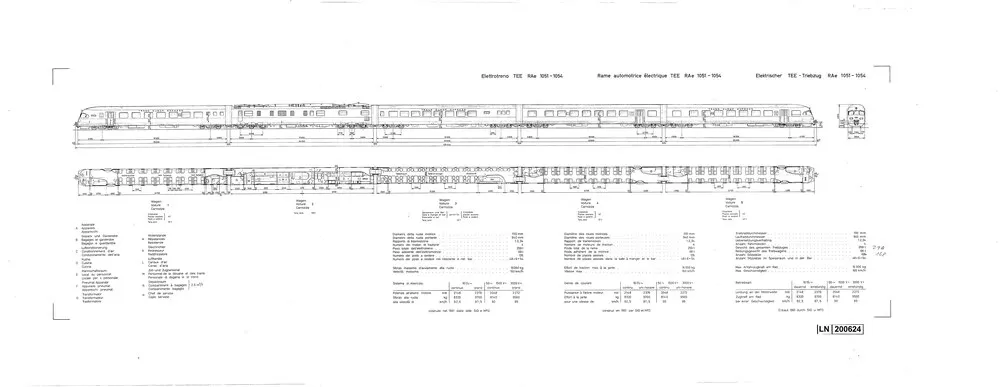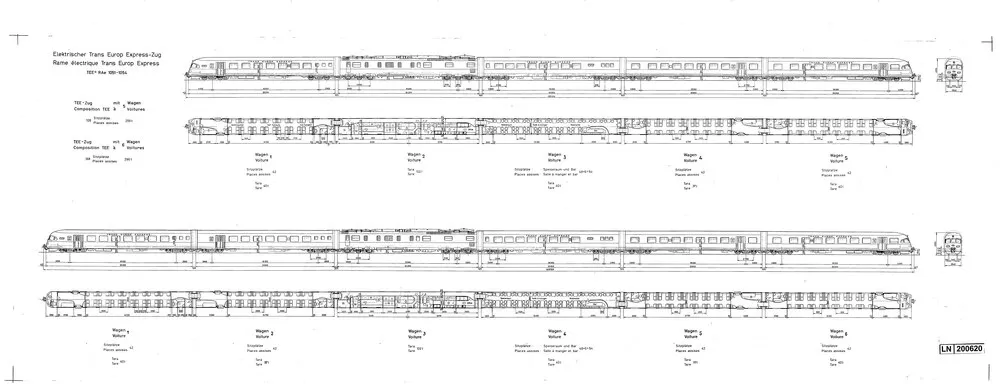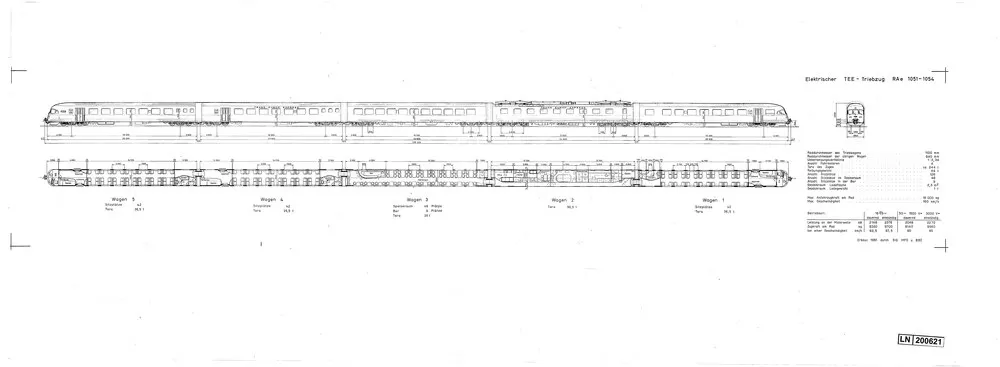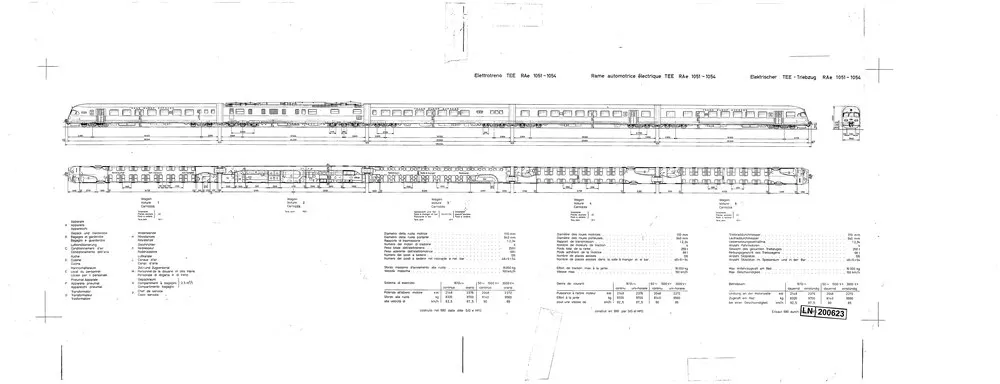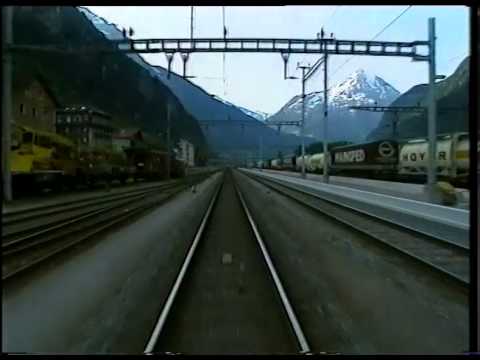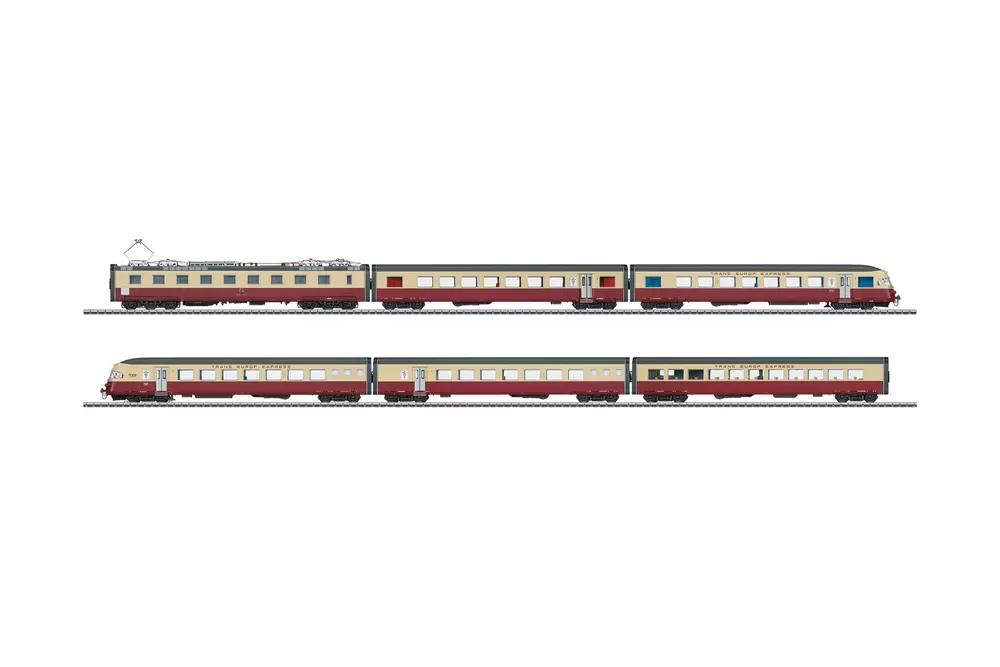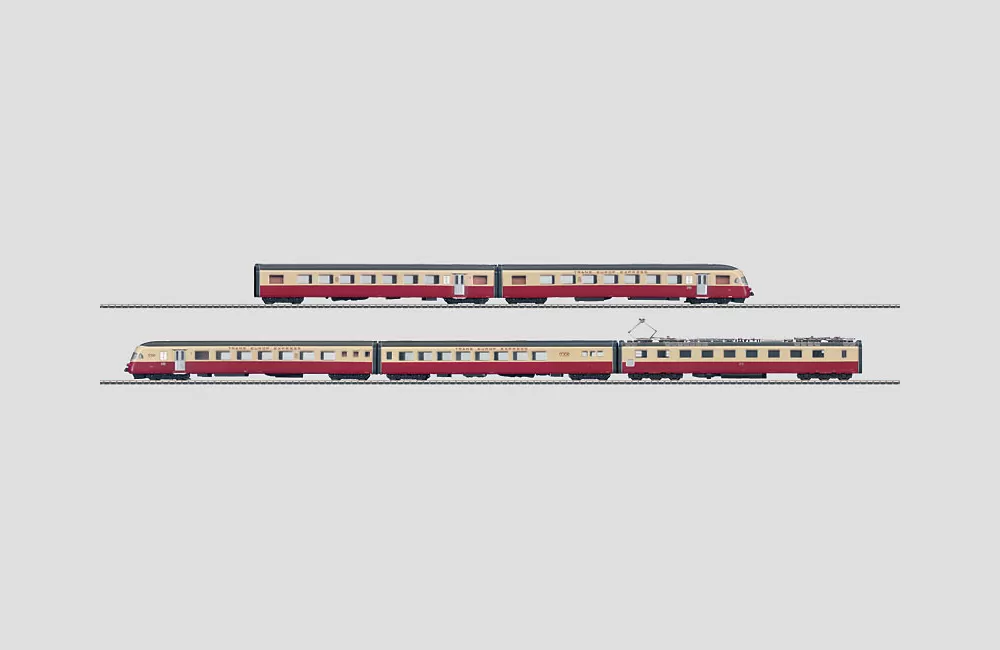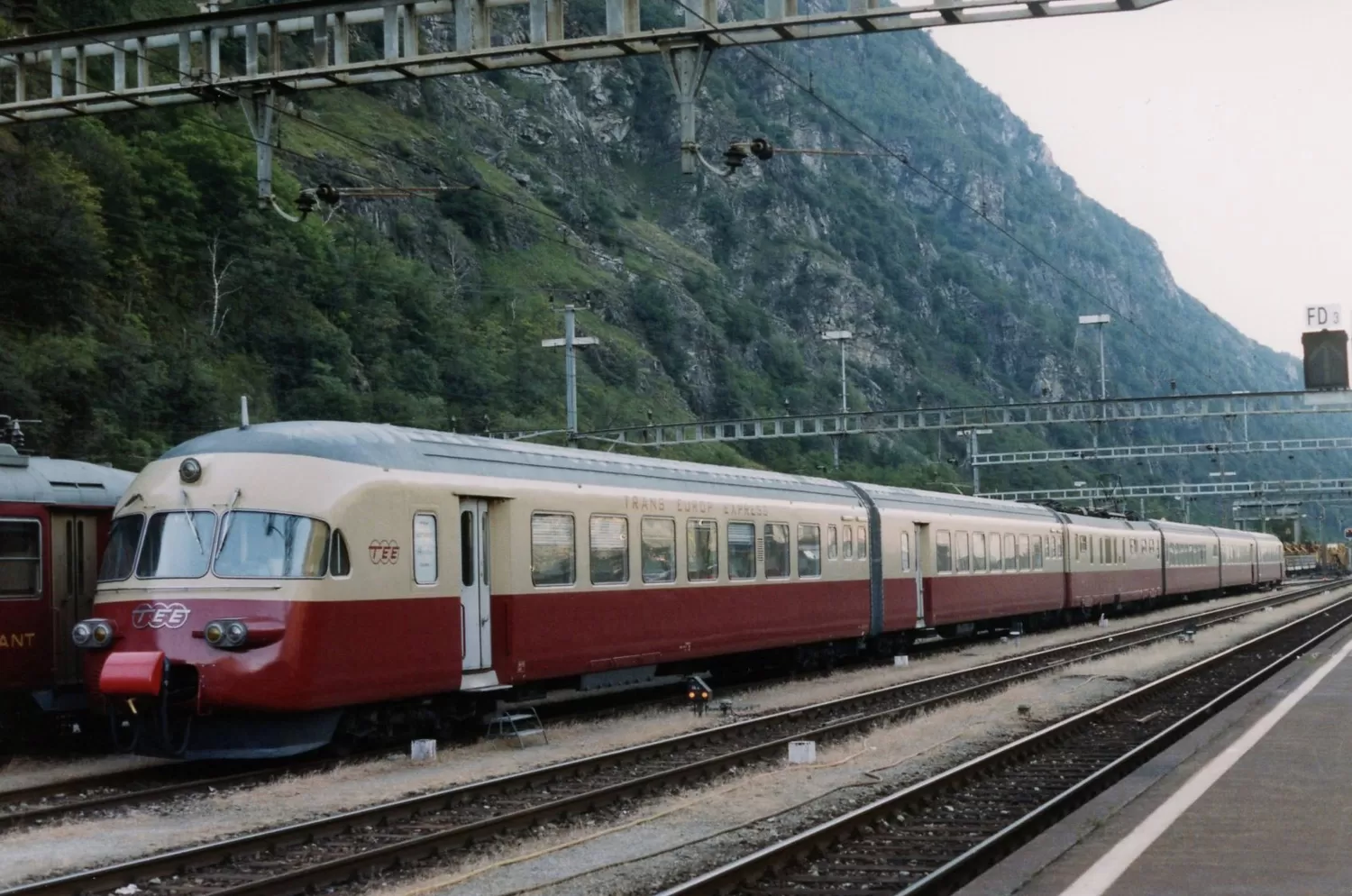
Source: flickr.com
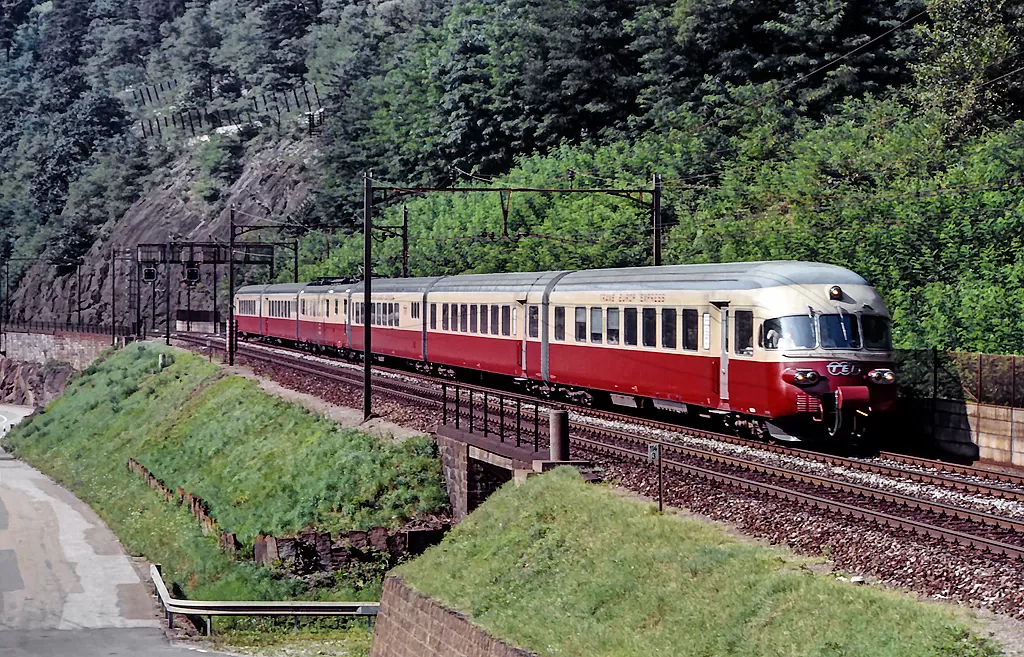
Source: maurizio messa
Also known as:
Vehicle type:
Registration country:
15 kV AC / 16,7 Hz
25 kV AC / 50 Hz
3 kV DC
*for the 5-car set
149'760 mm*
*for the 6-car set
*for the 5-car set
309 t*
*for the 6-car set
*for others
81,6 kN*
*for 15 kV
1961
1962
1965
1966
1967
1974
1979
1982
1988
1993-1999
2003
Do you have additional informations regarding this vehicle?
Help us writing the history of RAe TEEII 1051 - 1054 "Trans-Europe Express"! Your knowledge is precious for us and the entire community, do not hesitate to share your facts, photos or videos:
Latest update on the 8th of October 2023 at 13:40
Contributor(s): Tudor C.
Discussion forum

